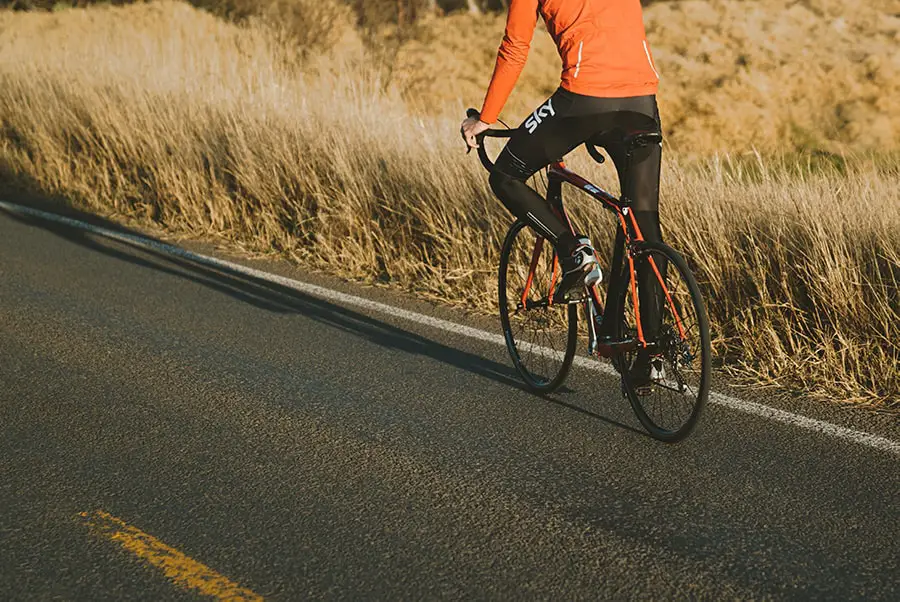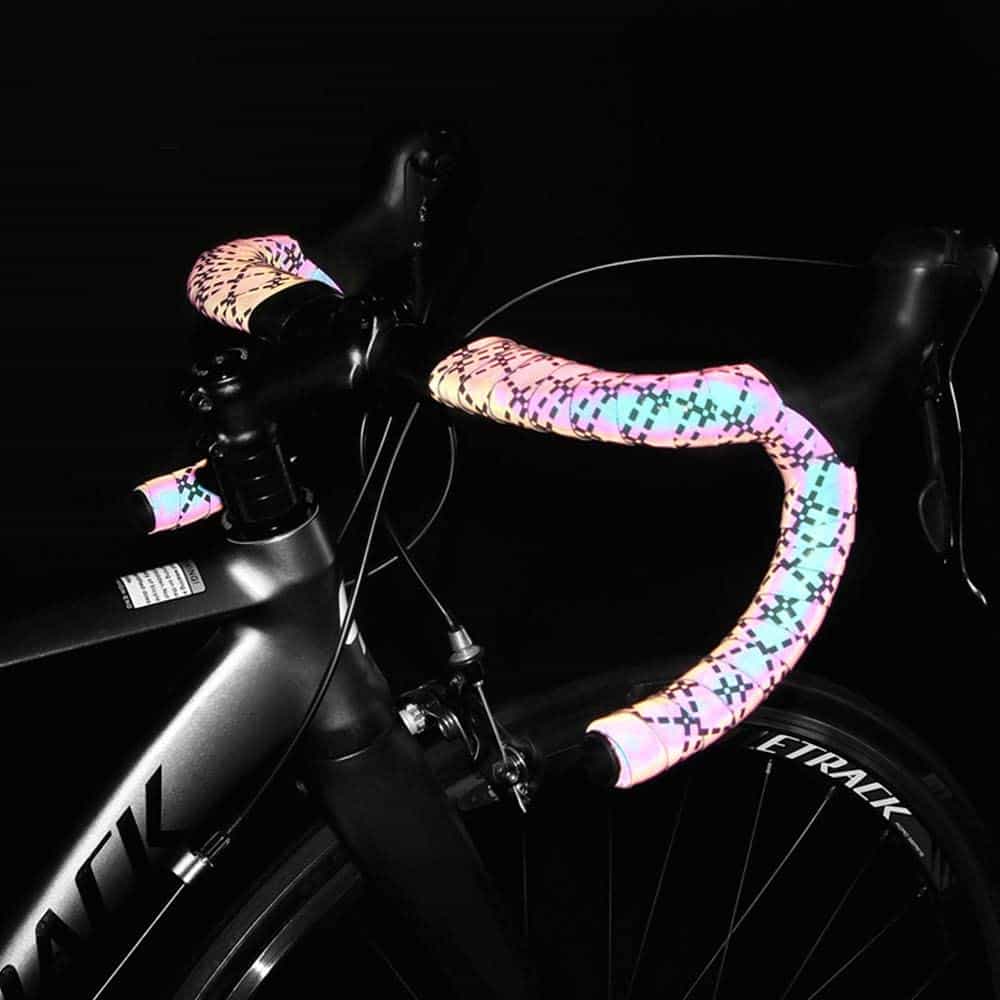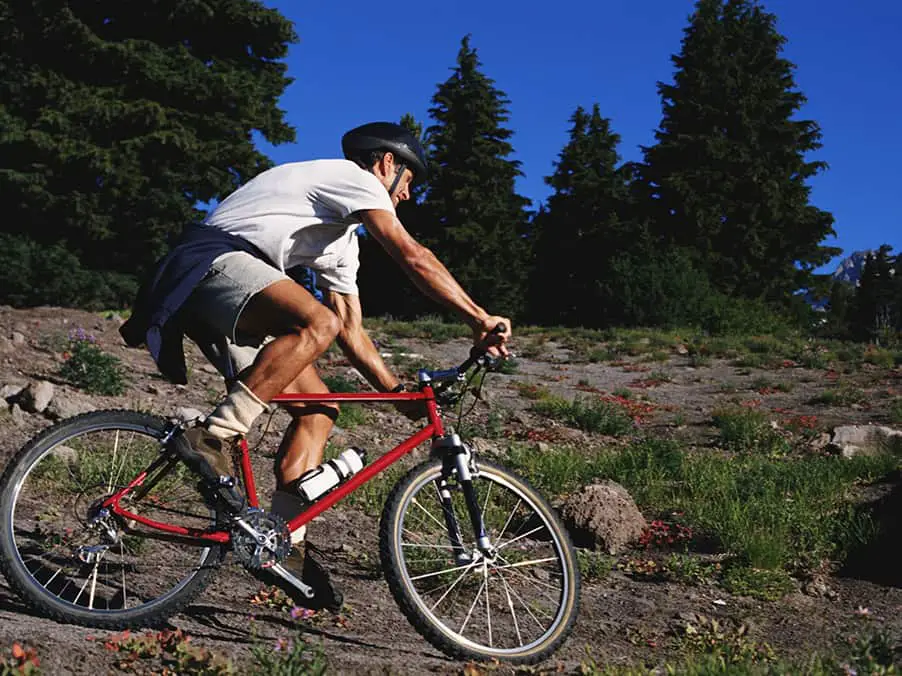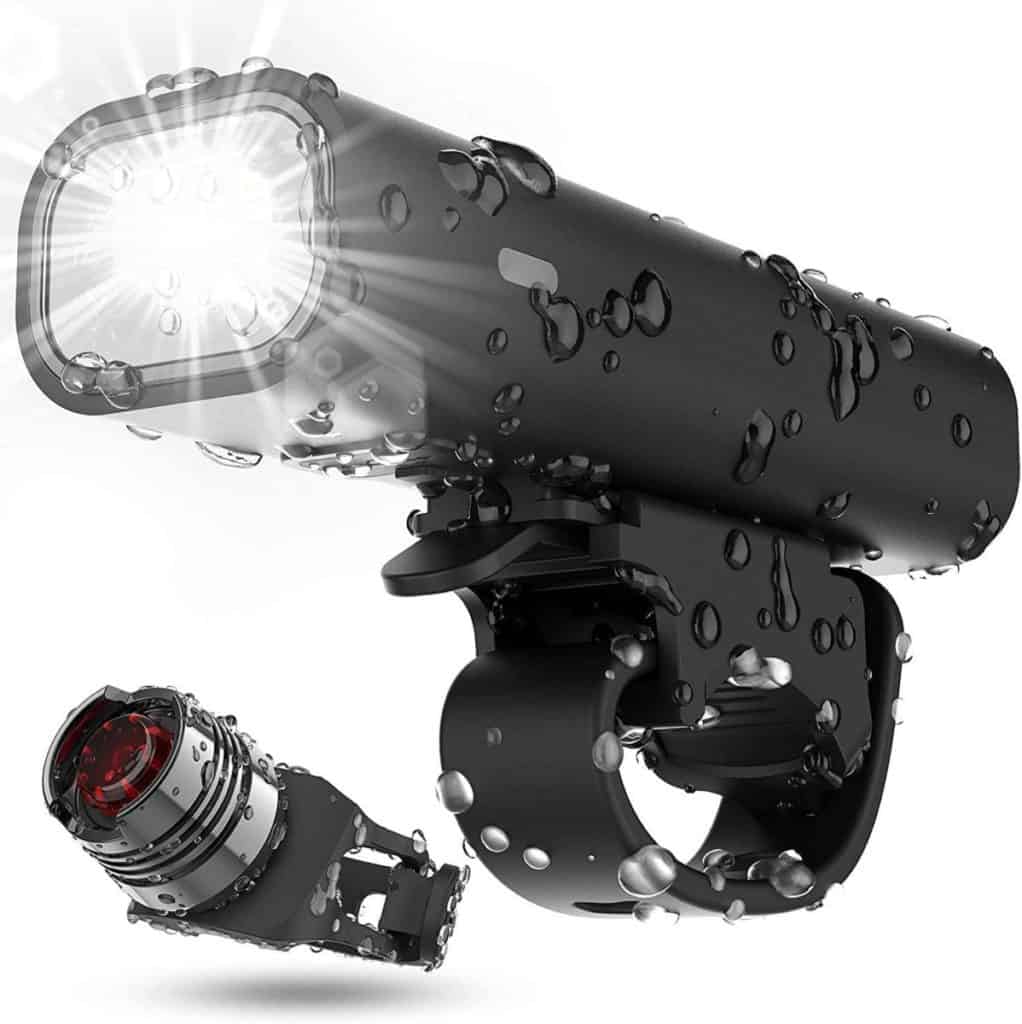
So you fancy becoming a bike commuter. If you are reading this article you are no doubt sick of the daily commute. Sitting in traffic, the hustle and bustle of a busy town or city and delayed public transport can all become but a distant memory if you embrace the bike commute.
If you have never cycled before, and this is your first time considering a bike commute, it is easy to be overwhelmed with all the bike options, clothing, accessories and the additional planning required. In addition to this, you have probably heard all the bad things about bike commuting too, such as the danger of the roads.
Getting started is easier than you may think, with a few bare minimum essentials, you can be bike commuting in no time. These are the things you will need as a minimum:
- Commuter Bike
- A good Helmet
- Appropriate clothing (note this doesn’t have to be specialised cycling clothing)
- Bag, or other methods of carrying things
- Lights
- Bike lock
- Essential bike maintenance items
That’s it!! Honestly!! The get going, this is all you need to consider. There are other considerations that can make your bike commute more comfortable but these can be added in time as you discover what you really need. They are not needed to get going. So what’s stopping you?
In this article, we give you all the information you need to get started in bike commuting. We only include the essentials so you can get going with the minimum expense and with the minimin kit. Here is a list of things you need to know.
- Preparing for your First Bike Commute
- How to Choose a Commuter Bike
- Get a Good Helmet
- Essential Clothing Needed to Bike Commute
- Essential Accessories Needed to Bike Commute
Preparing for your First Bike Commute
When you first start bike commuting, it can feel overwhelming. It feels like there are so many things to prepare and get in place before you can consider bike commuting, and for many, this can be a bit of a put-off.
With practice, this becomes natural and second nature over time but my first few weeks commuting was quite stressful.
I made every mistake in the book, I forgot my work shoes and had to wear smelly cycling shoes all day (luckily not cleats), I forgot my belt and spent the day pulling my trousers up, I forgot my access pass for the office, I forgot my lunch AND my wallet (and this was pre-Apple pay), I forgot my socks AND pants on the same day.
Luckily for you, I have already made these mistakes, so you don’t have to. I have created a FREE checklist for you to download to make sure your first few weeks run as smoothly as possible. This checklist means you can have everything ready when you need to so get out on your bike commute becomes easy and requires no brain power first thing in the morning when brains are not on fire!!

How to Choose a Commuter Bike
Picking a commuter bike isn’t an exact science, as some would make you believe. You need to take into account personal factors such as the route you will take, the condition of the road surface and your budget. The good news is purchasing your first commuter bike does not have to break the bank. You do not need a specialised, and vastly expensive, bike to get started.
Affordability is helped even further with incentives such as Cycle Scheme which can give you access to commuter bikes and other cycling equipment TAX-FREE!!! A lot of employers now offer a cycle to work incentivised scheme to encourage employees to bike commute so check in with your company on what is on offer. If they don’t offer it, ask them to consider it, there are many benefits for them too!
Of all the options of bike out there, you have 3 basic options for your commuter bike. These are a road bike, a mountain bike or a hybrid.
Road Bikes

It may be obvious, but road bikes are built for commuting on roads. They are built for this application and absolutely are the right choice if your commute takes you on a route with good quality, hard surfaces. This doesn’t need to be on roads only, many parks and purpose built cycle paths have good quality surfaces that are ideal for the road bike (without the traffic problems that roads bring).
All bikes can be used on roads, of course, but the road bike is optimised for this type of good quality road surface. This optimisation means that taking a road bike on slightly rougher terrain will be a challenge, could be dangerous for you and could damage the bike.
Road bikes are designed to take you as far and as fast as your legs can push you. The basic road bike design hasn’t changed much over the years, but the technology within the design is vastly improved and advancements in road bikes mean you can eat the miles on your bike commute.
Modern bikes are faster, more comfortable and more technologically sophisticated than ever before. The key characteristics of modern road bikes are described below.
Lightweight
Road bikes are designed to be as lightweight. How light your road bike in will generally come down to the budget you can allocate. For a reasonable budget, you can get a carbon fibre frame which will reduce weight significantly over an aluminium and steel option.
Weight is one of the key factors affective effort required when cycling so as a beginner bike commuter if you can, opt for a carbon frame if you want the lightest and stiffest road bike money can buy
Narrow Wheels and Tyres
Road bikes come with very narrow wheels and tyres which is great for reducing rolling resistance on the road and allowing more speed for less effort. They are not so good on un-even terrain and don’t absorb imperfections in the surface very well.
As road bikes are designed for smoother paved surfaces, the wheels are generally weaker in design than other types of bike. There is not the ned for more rigid rims and they have fewer spokes than would be needed for rougher terrains. This enables a lighter wheel and, hence, a lighter bike but can make your ride rough if you are on more challenging surfaces. Even rough cycle paths and canal paths can be challenging on a road bike.
A Drop (Curled) Handlebar

Road bikes generally are installed with a drop handlebar setup. Drop handle bars generally allow you to get into a more aerodynamic riding position meaning you can increase average speeds. The lower position also puts your body in a position where you can generate more power, albeit in a much. ore uncomfortable position.
The speed benefit is not a prime driver for the average bike commuter, and for us average Joe’s, the main benefit of a drop handlebar set is the ability to ride in multiple positions. Shifting positions helps us manage any discomfort of a longer ride meaning we can shuffle around the bike when our muscles start to feel any pain.
Drop handlebars give the bike a narrower profile too meaning it is easy to squeeze in and out of busy traffic because your bike is not as wide.
No Front or Rear Suspension
The need for suspension on a road bike is removed due to the fact that you are using paved, smooth-riding surfaces. The advantage to this is the removal of any additional weight from the bike as well as removing the need to maintain the suspension system.
The downside is you will feel every bump and lump on the surface and so any rough unpaved surface becomes a challenge not only for stability but also for comfort.
Higher Gear Ratio
Put simply, a gear ratio on a bike refers to how many times the back wheel will rotate for each full turn of the crank arms (pedals). By changing gear on your bike you can change the gear ratio for the given situation, for instance if you are climbing a hill or you want to increase your speed.
A road bike generally allows for higher gear ratios, which mean you can get the bike moving faster for the same cadence. Cadence on a bike is defined simply as the rate at which a cyclist pedals.
With higher gear ratios, toy can get more speed out of the bike meaning for long road rides, where the hills are more manageable (when compared to mountain climbing for example) you can improve your average speed and hence reduce your commute time and cover more miles more easily.
Should You Get a Road Bike?
If you want fast, efficient cycling on tarmac roads for commuting, then a road bike will be a great choice.
Do not get a road bike if you want to take it off the road, even for a short part of your commute. Skinny wheels mean you won’t really be able to use a road bike on anything other than tarmac. Icy roads can also be a problem for road bikes.
Mountain Bikes

Mountain bikes are chunkier in design, have thicker, grippier wheels, are better for hill climbs and rougher terrain and can handle a lot more bumps and lumps than the road bike option.
As the name suggests, these bikes are built for, well…. mountains!!! They are designed to handle much more rugged, off-road terrain and so are a great option if your commute route takes you off-road.
Conversely, they are no built for speed, like a road bike and are likely to be a heavier bike due to some of the additional features such as suspension and disc brakes. These features are pivotal to a mountain bikes prime purpose but do make it less of an obvious choice for a flexible commuter bike.
If you route takes you mostly off road, then a mountain bike could be the option for you. However, if you are mostly road riding for your bike commute it may be best to take a longer, less direct route and stay on the road enabling you to fully utilise a road bike.
That being said, you can definitely take on a quieter, more peaceful and scenic route if you opt for off-road which may help you to enjoy, and sustain, your bike commute more easily.
If you think a mountain bike is the commuter bike for you, you can read our more in-depth article on bike commuting on a mountain bike including modifications to make the mountain bike more suitable for commuting.
The key characteristics of mountain bikes are described below.
Wider, Grippier Wheels and Tyres

The tires of a mountain bike are potentially the most apparent difference between from the road bike. These tires are often 27.5 or 29 inches in diameter, as opposed to the larger, but thinner, road bicycle wheels. Moreover, such tires are knobby, which increases traction and adhesion to the road for better control.
This is a great advantage when negotiating difficult, off-road, terrain. The added contact and surface adhesion makes your ride more stable and controlled. However, this increase rolling resistance makes the going much slower. If you ride the mountain bike on a normal road, the difference in road speed is massive which will significantly affect the time your commute takes.
You can swap out these tyres for thinner tyres which is what hybrid bikes take advantage of. See the information on hybrid bikes below for more information.
Flat Handle Bars
Mountain bikes generally have more flat handle bars allowing optimal control over the terrain and road. However, this can add a strain to your arms and might add fatigue to your commute.
Flat handle bars generally make the bike wider too so getting through narrow gaps in traffic can be more challenging.
Front and Rear Suspension

Mountain bikes come with front suspension in most cases. A bike with just front suspension (a suspension fork) is referred to as a hardtail, a bike with both front and rear suspension is referred to as a dual-suspension, or full-suspension bike and a bike without any suspension at all are known as a rigid mountain bike. Hard or soft (rear suspension included) are options that can be opted for and the choice it will depend largely on your usage as to the best option.
Many mountain bikes have a front suspension system which helps to alleviate pressure on the rider’s arms and shoulders while riding over tough terrain. As the terrain becomes more challenging, a rear suspension system will absorb the bigger impacts and keep your wheel tracking on the trail, allowing more control and confidence for the rider.
Disc Brakes
Most mountain bikes now come with disc brakes, as opposed to the V-brake which is still used for road and touring bikes. Whilst the disc brake adds more weight to the bike, and are more complex to maintain, there are advantages for off-road riding.
Disc brakes are the best choices you can make in terms of stopping power, control, and safety. The main advantage is the resilience to wet, muddy conditions, ofter found off-raid. The larger surface area of the brake pads on disc brakes allows for them to be more effective even in these conditions.
When going in terrain that is sandy or muddy, debris can get stuck to the rim and when the brakes are applied, any debris caught between the pad and the rim can scrape the rim during the braking process and cause permanent damage. With a disc brake, this isn’t an issue. This means that you will be replacing your mountain bike wheels less frequently.
Lower Gear Ratios
Handling more severe climbs is what mountain bikes were designed for and because of this mountain bikes generally have lower gear ration to ease the effort required on tough uphill climbs.
As a result, top speed is affected by the lower general ratios, as well as other factors and you will have to work harder to maintain a faster top speed than on a road bike.
Should You Get a Mountain Bike?
If your bike commute takes you mostly off road, and is a reasonable distance, then a mountain bike could be a good option. Covering a large distance on a mountain bike can be challenging and take its toll on your body leading to fatigue over the working day. If you are commuting less then 10 miles, on rougher terrain then this could be a good option for you.
You may want to modify your mountain bike to make it more commuter-friendly and so it is worth reading this more in-depth article on bike commuting on a mountain bike.
Hybrid Bikes
Hybrids feature a combination of road bike that takes some influence from mountain bikes which can potentially bring the best of both worlds to your bike commute.
Like a road bike, most modern hybrids are usually built around the same wheel diameter as road bikes however, the tyres are often wider, but usually not as wide as a mountain bike. This allows you to traverse rough roads and gravel paths with ease.
Use of a hybrid bike allows you to use the smooth road, in combination with some rougher cycle or canal tow paths to bring some variety to your bike commute. There also allow you to have more options of routes meaning you can mix it up over the course of your working week. This provides a higher probability that you will sustain, and enjoy, your bike commute.
Due to the ‘middle of the road’ (no pun intended) design, these bikes are not exceptional in any circumstances, you will not get the same speed on the road as a dedicated road bike and you will not be able to traverse off-road terrain as effectively as a maintain bike. However, you are a bike commuter, not a road racer or a downhill champion. You need a bike to suit your needs and a hybrid can be that very solution.
Hybrid bikes also offer almost unrivalled versatility, with many bikes covered with bosses and mounts for every accessory imaginable. This makes them an ideal candidate for conversion into a perfect bike commuter bike allowing panniers, water bottles, pumps, bike locks and other bike commuter essentials to be mounted to the bike ready for your daily bike commute.
Other accessories, such as mudguards, racks and lights can be easily added.
Due to the versatility of a hybrid bike, you can use it easily for other day to day activities such as going to the shops, riding across town to visit friends and family and generally getting around increasing your cycling usage over the week and reducing the dependency on a car or public transport for your daily needs.
Should You Get a Hybrid Bike?
If you want versatility, the hybrid is for you. If your commute takes you on a mix of terrains, then the wider tyres and more comfortable riding position offered by a hybrid, over a road bike, may be the perfect option.
Other Commuter Bike Options
Folding Bikes
Folding bikes, as the name suggests, fold down into often impressively small packages that can be stored just about anywhere at either end of your journey. They are also great for the multi-modal commuter as they can easily be taken on public transport for part of the journey, allowing you to cycle to transport hubs at either end.
A folding bike won’t handle like a regular bike, it can’t compete with the main three options for general bike commuting. This is in part, due to its use of small wheels and the inevitable compromise that creating a packable bike demands.
Folding bikes also tend to feel pretty slow on the road, but the idea here is that you are not trying to break any records, and likely have a much-shorted commute than those opting for a road, mountain or hybrid bike.
The market leader for folding bikes is Brompton who will be able to provide everything you need in a folding bike, but there are a lot of additional options.
Should You Get a Folding Bike?
Folding bikes are really only a viable option if your commute distance is really short (a few miles at most) or if you want to cycle part of the route and use other forms of transport, such as public transport for the rest.
If you usually use the train for your commute, for example, a folding bike is a great way to get to the train station and then get to work at the other end. Taking you bike on the train is easy with a folding bike and if the distance to the train station from work and home is not too far, then this is a great option.
e-Bikes

e-Bikes are becoming more and more popular due to the lower price options that are coming on the market and the cost of battery technology continues to fall. With a growing range of e-bike options, you can use the bike as a form of exercise when you’re up for it, or get to work quickly and easily (and much less sweaty!) when needed. Great for if you bike commute with no shower.
e-Bikes bring a plethora of advantages over the completely ‘muscle-powered’ variants. They provide extra power if you are feeling fatigued, perfect for the daily commute when you don’t necessarily feel energetic. This added power can be great too if your fitness level needs building, helping you on difficult hill climbs.
If you want to bike commute but suffer from knee pain or asthma, e-bikes are easy on the joints, unlike traditional bikes which mean bike commuting can be an option for people with many health conditions, where it would have been impossible before. Your bike commute can then be used to improve overall strength and fitness and, over time, becoming less reliant on the ‘powered’ feature. This could lead to building up to using a ‘muscle-powered’ bike in the near future, further increasing health and fitness.
Although maintaining an e-bike can be expensive, it’s still cheaper than maintaining a car, this includes fuel consumption, insurance road tax and MOT and an eBike doesn’t require the need for a licence!
Due to the powered option, e-Bikes can travel at faster speeds than other bikes which means a longer distance bike commute becomes a credible option. Also, this could lead to a reduction in overall commuting time which would be a major enabler to leaving the car at home.
Whilst e-Bikes do have some great advantages, you will have to accept that they are more expensive than other forms of bike and likely to have an increased cost of maintenance and repair. The great news is that e-Bikes are covered on cycle to work schemes generally and so you can utilise the tax benefits this can bring to improve the affordability position.
Should You Get an eBike?
If you suffer from your health with conditions such as knee pain, arthritis or other skeletal and muscular issues, e-Bikes could be the solution for opening up a bike commute option for you. The e-Bike will help to introduce you to bike commuting and give you an opportunity to work out as much as you can on your commute.
They can also be a great option if your commute distance prohibits the use of the other bike options.
e-Bikes are also a lot of fun to ride!!!!!!
Get a Good Helmet

The most important piece of equipment for bike commuting is the helmet. Whist not mandatory in a lot of countries when cycling, we highly recommend that you wear one. Helmets protect you from a whole host of danger and potential injury and modern designs have significant comfort, style and functionality.
My recommendation for a bike commuting helmet is the POC – Omne Air Spin Bike Helmet for a traditional helmet, and for additional functionality, you should try the LUMOS Kickstart Lite Helmet. It is safe to say that POC leads the way of innovation and style when it comes down to picking the perfect helmet for your commute and Lumos offer some added functionality.
If you are going to spend money on anything for your bike commute then it should be the helmet. It protects your brain after all and despite being careful on your commute, accidents can and do, happen, unfortunately. Frugality is not for helmets. If you opt for high quality here, a good helmet will last years so it is more advantageous to not buy cheap and look to buy only once.
There are loads of helmets on the market and they can range from cheap to super expensive. A cheap helmet is better than no helmet and you can be assured of the quality if you buy from a reputable cycling shop or online store. There really is no excuse not to have one and to be a responsible bike commuter, make sure you have one.
For more information on helmets, check out our recommended products page.
Essential Clothing Needed to Bike Commute
Other than a bike, you will not need to spend a lot of money on specialised clothing. Whilst you can use your Cycle Scheme to buy clothing and accessories, some people will just not feel comfortable is skin tight lycra, especially when first starting to bike commute. The good news, you don’t need it!
There are some advantages to the skin tight lycra cycling outfits. They are designed to be aerodynamic, with not flappy bits to slow you down in the wind. They usually have added features, such as reflective and high visibility materials to help you to be seen at night.
When you first start, just wear whatever you feel comfortable in, loose fitting and comfortable clothing is absolutely fine. It is best if these clothes are made from breathable and sweat wicking materials to ensure maximum comfort, but you can use clothes you already have.
My only recommendation for clothing, for the beginner bike commuter, is some padded shorts. On those first rides, you will definitely feel a little sore in the ‘saddle’ area. Padded shorts will help to lessen this discomfort in the early days before your bum gets used to it. I would opt for the bib type padded shorts, which secure over your shoulders as a baby grow! This is just so you don’t have issues with them creeping down during your ride, and avoid giving drivers a lovely view of your ‘builders bum’.
We have some clothing recommendations for you to look at but we deliberately don’t focus on ‘cycling-specific’ clothing for the beginner bike commuter. It is just not necessary.
Essential Accessories Needed to Bike Commute
The only accessories you will need to get started are:
- Lights
- Back pack
- Bike lock
Lights – See and Be Seen

It is inevitable that at some point in your bike commuting life, you will be faced with the need to bike after the lights have gone out. Even if you can plan your working hours relatively well around the rise and fall of the sun, unforeseen issues will lead to you to bike commute at night.
When bike commuting at night it is important that you can see and BE seen by other road users!! It is the law to ride on the road with good bike lights fitted which is critical to keeping you safe at night. It also a good idea to wear high reflective clothing to complement your light set up.
My recommendation for bike lights is the TEMINICE – USB Rechargeable Bike Light Set. These are not the most expensive light sets on the market, not by a long way. They are very reasonably priced and provide enough brightness for any situation. Check out our product page for more information.
For increased visibility I also recommend the Firefly Buddy Reflective Vest and Bands. These are so lightweight, you won’t even know you are wearing them and the cost is really low for such a vital safety item.
Back Pack
If you are bike commuting to work, you will need to keep all of your valuables safe from the elements. While you might enjoy using the computer supplied in your office at work, you might need to carry your laptop with you and, depending on your profession, other electronics.
You will also need to carry your lunch, a change of clothes and shoes (if you can’t leave them at work in advance).
However, protecting them from the rain and wind is easy with a waterproof bag. If you are looking for a high-quality alternative that won’t let you down in any situation, the Osprey Metron is as suitable for your commute as it is for a camping trip in nature.
If you do not want to carry a back pack, in truth they do make your back sweat, you can opt for a front or rear storage rack. There are also several benefits to this choice you should not ignore. Firstly, side-mounted or back racks allow you to take off some of the strain that the weight could be putting on your back. Moreover, you can balance the weight equally on your bike, so that your travel experience is not affected.
We recommend the NOCHME Rear Bike Rack Carrier if you opt for this solution.
Bike Lock
It’s not nice to admit, but unfortunately, your bike is a desirable item for theft. It is reported that over two million bikes are stolen each year in North America—meaning every 30 seconds, someone’s bike goes missing. Therefore a good bike lock is essential security equipment.
The Via Velo – Bike U Lock with Cable is a great choice for your bike lock. It is strong and durable and provides a great deterrent to any potential bike thief. It has a really strong quality feel about it and has the specs to back it up.
Essential Bike Repair Items
Independent on how expert and experienced you are on your bike, you are likely to be stopped by a puncture. While this incident might cause you to lose time, being ready for this eventuality will allow you to find a quick solution and get back on the road.
Since you won’t be able to have with you all the tools and pieces of equipment a mechanic can benefit from, you will need to wisely craft your kit. Among the most critical components of such a kit, you should have a spare tube, a multi-tool, and a pump. While these might not be enough to solve a more severe problem with your bike, it can help you get to your office on time!
Summary
You will not need as much gear as you may think to start bike commuting. All of your gear, including your bike, can be bought through schemes such as Cycle Scheme and so you can get everything you need, TAX-FREE.
Don’t worry about top of the range gear. Just get the bare minimum you need and start to bike commute. It really is as simple as that. You can add more and more gear as you learn what else would make your commute more comfortable but once you have a bike, a helmet, some lights, a bag and some appropriate clothing, you are good to go!
More Resources
The articles below will help you further on you alternative commute journey.
20 Must-Have Bike Commuting Essentials
15 Bike Commuting Myths and Excuses – BUSTED
How to Bike Commute on Busy Roads
Is Bike Commuting Dangerous? 7 Top Tips for Staying Safe

